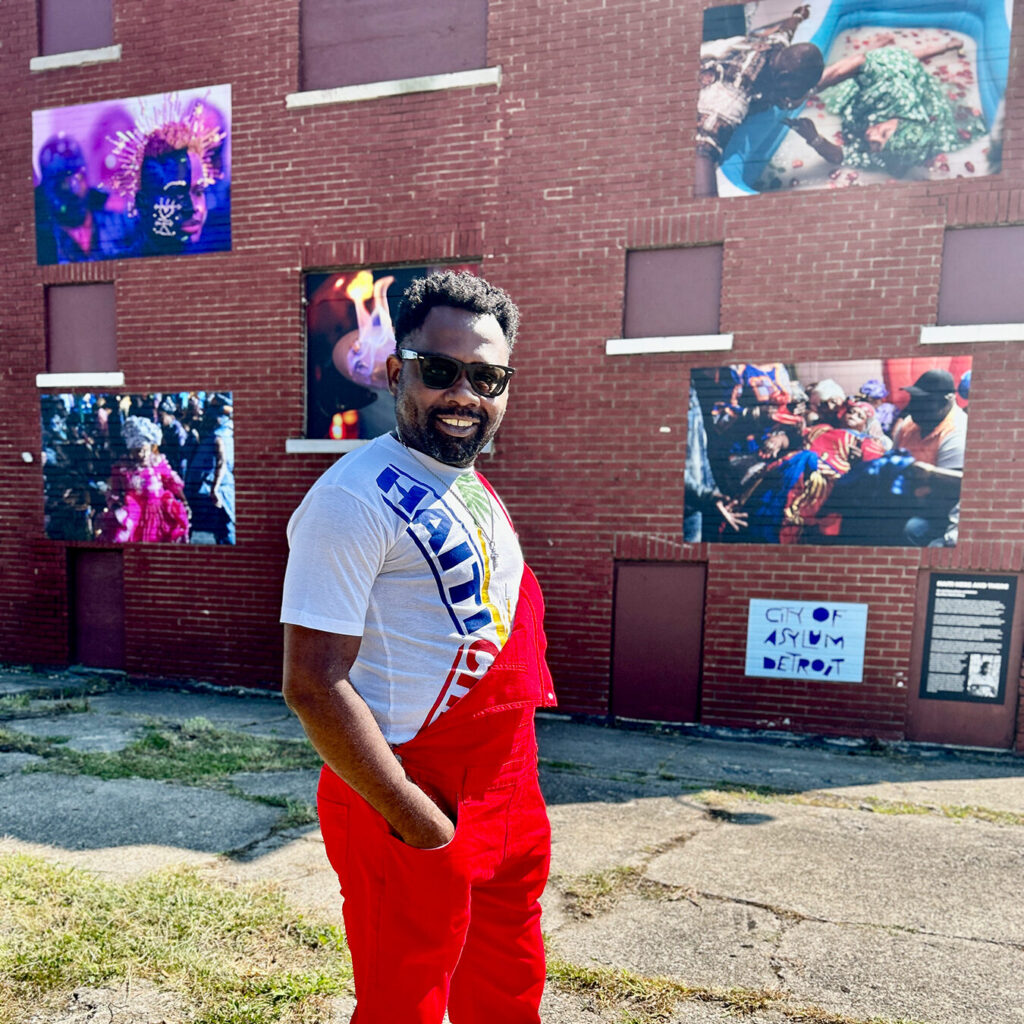A Knight-Wallace Press Freedom Fellow in Action
When Donald Trump used the national debate stage to amplify false claims that Haitian immigrants were eating the pets of residents in Springfield, Ohio, Haitian photojournalist Dieu-Nalio Chery felt a mix of sadness and purpose.
“It’s painful for me to do a project on Haitians here [in the U.S.],” says Chery. “Haitians [in the U.S.] are suffering a lot. They are victims of racism. They are exploited. … Sometimes, when a community is underrepresented, the media will not spend money for a journalist to dig deeper. I feel that I can help with that.”
Chery grew up in the Haitian countryside and began working in his uncle’s photo studio in Port-au-Prince in his 20s. The powerful and heroic images that Chery captured throughout his ensuing two decades as a photojournalist — including 11 years working for The Associated Press — have become iconic records of 21st-century Haiti.
Much of Chery’s photography has focused on human rights issues — struggles of civilians living in slums, grassroots protest movements, government-perpetrated massacres of political opponents, the devastating aftermath of the 2010 earthquake and other natural disasters, the cholera epidemic, United Nations relief efforts and gang violence.
Chery’s most personally meaningful photography experience occurred in 2008, in the aftermath of Hurricane Ike. He accompanied a team of United Nations soldiers to save the lives of 35 children and teachers trapped in an orphanage surrounded by floodwaters. Despite not knowing how to swim, Chery waded in water up to his chin and carried children on his shoulders, one by one, to safety. He took moving photos throughout the successful rescue.
“We didn’t know if we would get out of that water,” Chery recalls. “It was crazy that day. I felt proud to be a part of that.”
In 2019, while photographing the ratification ceremony of a newly appointed prime minister, Chery suffered an accidental gunshot wound to his jaw yet still managed to take an award-winning photograph that showed both the shooter — a Haitian senator — and the spent cartridges flying through the air.
In 2020, Chery was a finalist for the Pulitzer Prize in breaking news photography for a series of searing photos taken during protests across Haiti that called for the resignation of then-President Jovenel Moïse. Two years later, Chery was targeted for assassination by a powerful Haitian gang and narrowly escaped, fleeing Haiti. He and his family are now cobbling together a new life in the United States and seeking asylum. Chery has earned multiple prestigious fellowships while freelancing for major outlets, including The New York Times, Reuters and The Washington Post.
One of Chery’s ongoing goals is to write the articles that accompany his photography. In 2022, he wrote a feature story and created a photo essay for The Washington Post titled “Vodou in Photos: How Followers of an Ancient Faith Are Battling Stereotypes.” In 2023, he co-authored and photographed a piece for The New York Times about gentrification in Miami’s “Little Haiti” neighborhood.
Chery’s Knight-Wallace Fellowship project is aimed at capturing the Haitian diaspora’s diversity and resilience — highlighting how the community has “endured, grown, struggled and thrived
across generations.”
He will supplement his photography with crowd-sourced family photos, as well as images found in attics, basements, churches and university libraries.
Community engagement is central to Chery’s approach. He gave a powerful guest lecture at a recent University of Michigan symposium on Haiti. He also shared his Haitian diaspora photography at a public exhibition organized by City of Asylum/ Detroit. The event was held outdoors in a public space to ensure inclusivity and community spirit. Chery’s photography was projected onto the walls of City of Asylum’s future office building while guests enjoyed a spread of Haitian food.
Chery hopes that his next exhibition will be in Springfield, Ohio — the sudden epicenter of a vitriolic national immigration debate and the home of more than 12,000 Haitian immigrants. Chery would love to present his work to Springfield residents, as well as create a photo essay of portraits alongside quotes and text that illuminate residents’ diverse stories.
He says: “I want to make something [in Springfield] that can help unite the community.”
Some of Dieu-Nalio Chery’s photography can be viewed at visura.co/dieunalio.
This article appeared in the Fall 2024 issue of the Wallace House Journal.
Ashley Bates is the Associate Director of the Knight-Wallace Fellowships.

